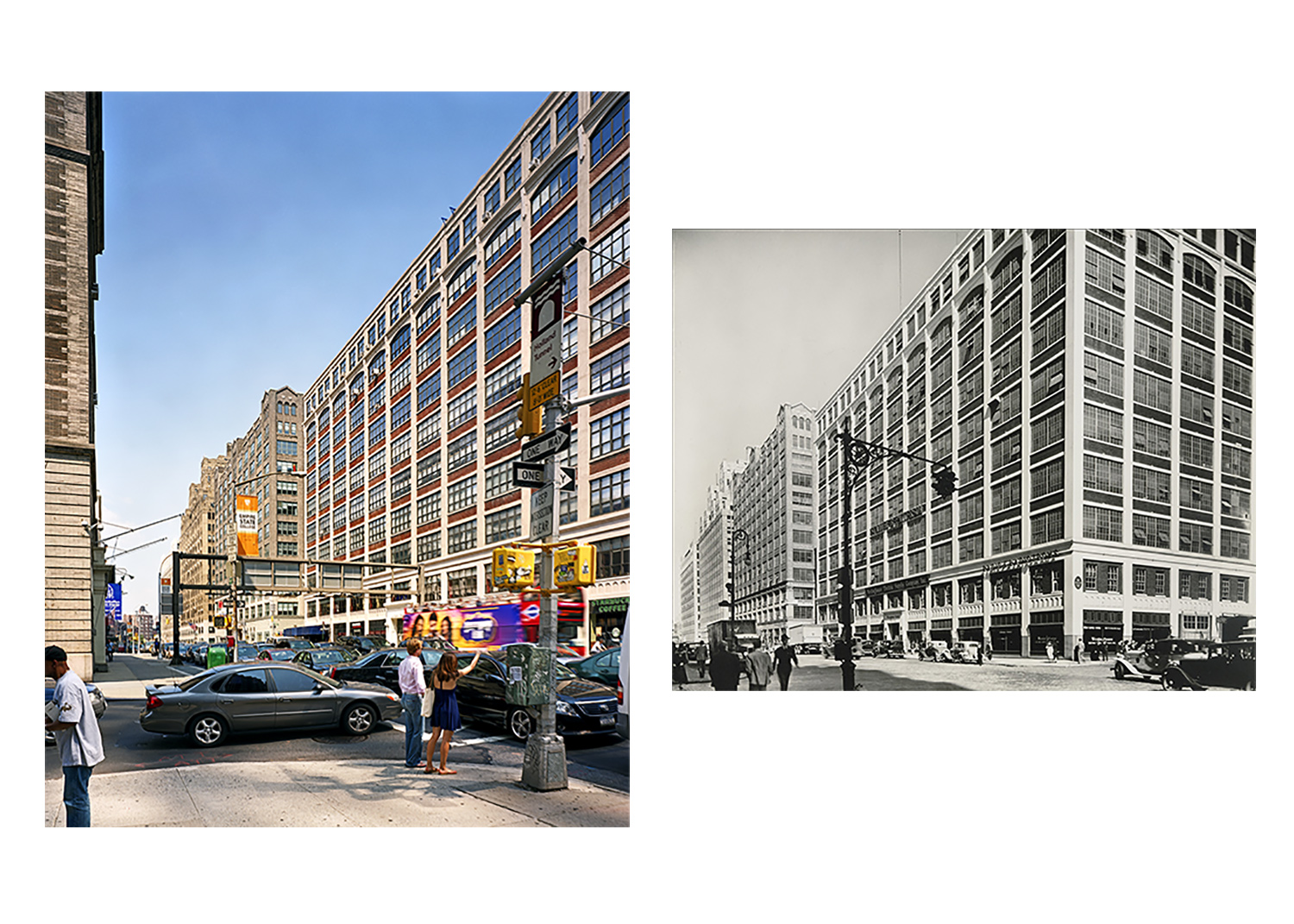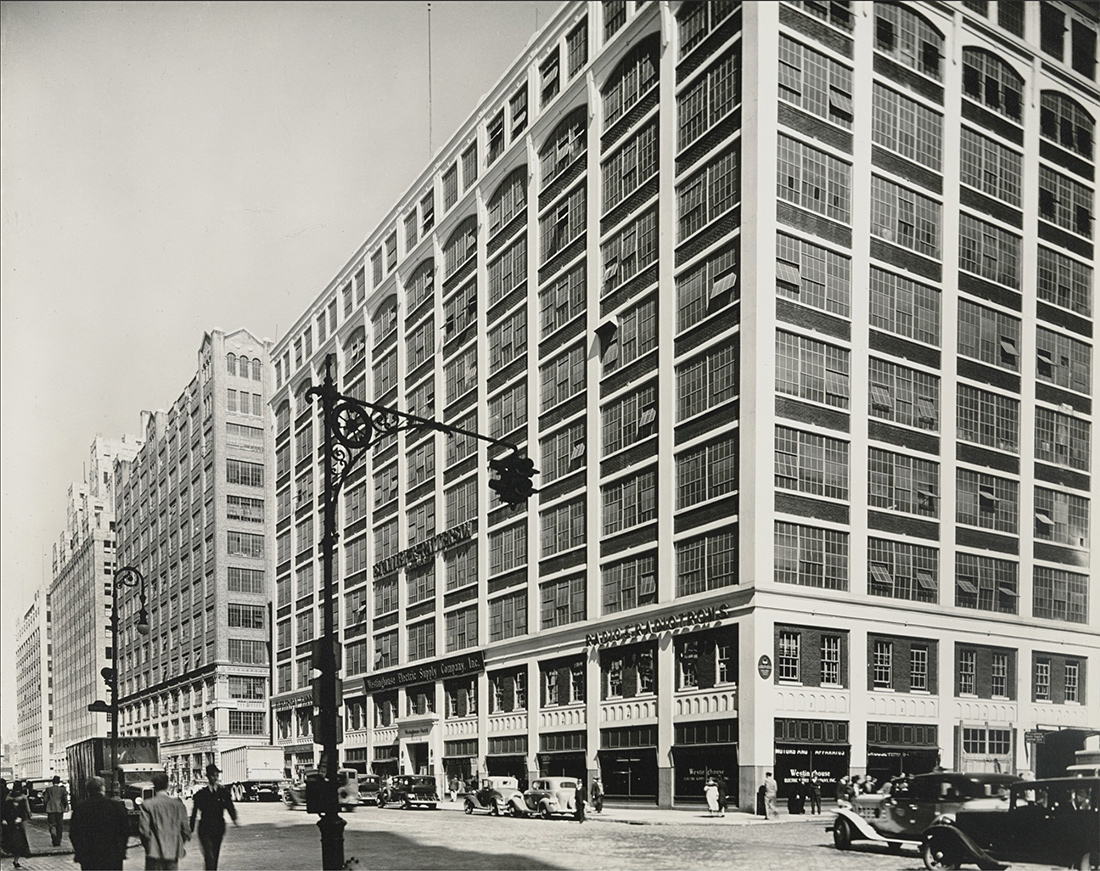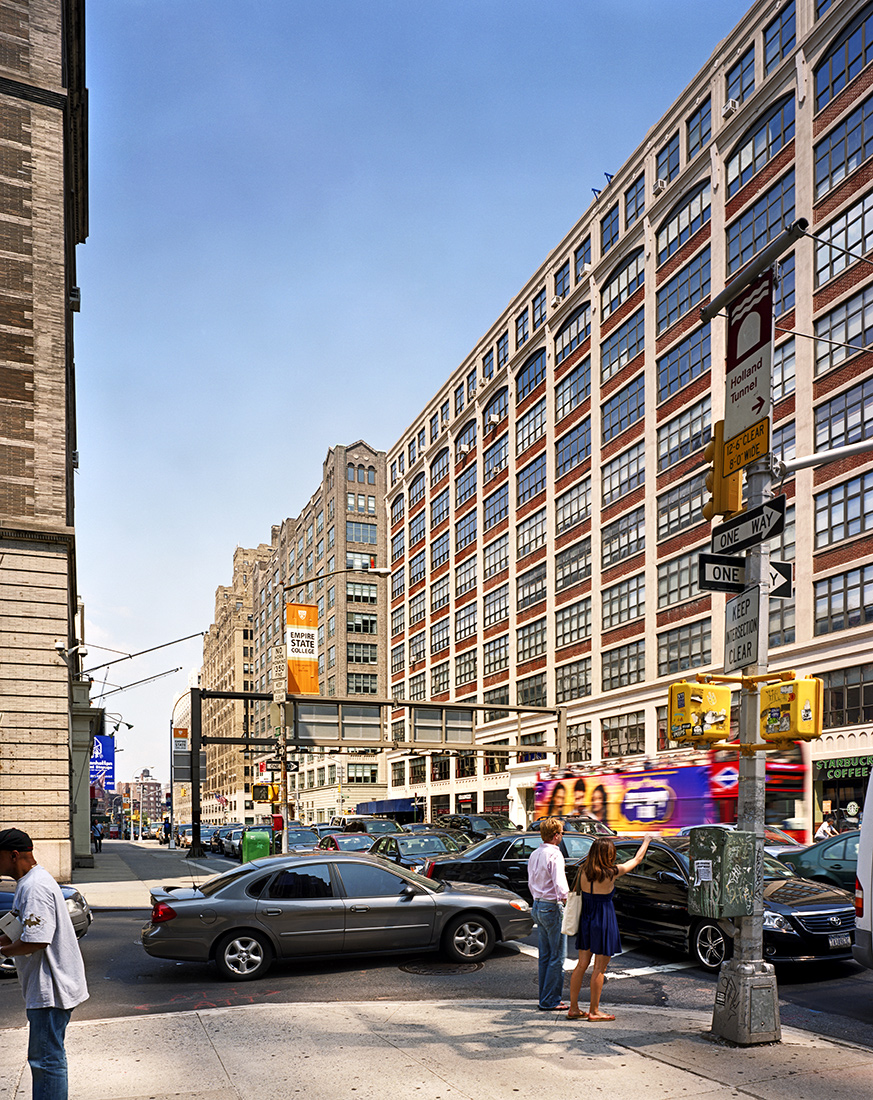
150 Varick Street, NYC – Brian Rose and Berenice Abbot
In 2009 I had an assignment to photograph the Hudson Square neighborhood of lower Manhattan. Hudson Square was once known as the Printing District because of the large number of printing businesses that occupied the massive loft buildings along Hudson and Varick Streets just north of Canal Street.
One of the photographs I made, on the left above, shows the impressive street wall along Varick. I printed it 4×5 feet, and it was hung on the client’s office wall.
What I didn’t know until very recently, was that Berenice Abbott had made a photograph from a similar perspective in 1935. I am familiar, of course, with Abbott’s work, especially her “Changing New York” book. I have always admired her photographs – even had a chance to meet her in 1980 – but have tended to look through her, probably unfairly, to Eugene Atget, whose documentation of Paris in transition is, for me, one of the pinnacles in the history of photography. Abbott, additionally, is responsible for bringing Atget’s work to the public, and his influence on her own work is widely acknowledged.

Varick Street 1935 – Berenice Abbot
I’ve been looking at the two photographs of Varick Street side by side. They appear, at first, to be near twins. But looking further, subtle differences multiply. Abbott was aware of the same receding street wall as I was, but she aimed her camera more squarely on the building at the corner, 150 Varick Street. It was built in 1926, just nine years before her photo was taken, an early example of Deco architecture, which was a style in full swing in 1935 when Abbott was roaming the city. To her, this building expressed modernity, beautifully juxtaposed against the elegant street lamp from an earlier era. The sign above the main entrance says Westinghouse Electronics, and the lettering near the corner says Radios and Radiotrons. The buildings beyond march to the edge of the frame as if in an endless parade, while a handful of cars and trucks occupy the wide thoroughfare. This is New York of the 1930s, a burgeoning metropolis emerging from the Great Depression, a city at the forefront of all that was new and forward-looking.

Varick Street 2009 – © Brian Rose
In my picture, I have pointed my camera up the avenue, including the line of receding buildings, but not focused on any of them individually. The street is jammed with vehicles barely moving as they approach the entrance to the Holland Tunnel. The flood of traffic suggests that the city has grown since 1935, and the automobile has taken over, and a previously two-way street is now purposed as a conduit funneling cars into the maw of the tunnel. My photograph differs from Abbott’s obviously by the presence of color. The composition is held together by a number of visual details – the couple at the center with the woman’s arm upraised – the double-decker tourist bus directly behind, slightly blurred, while everything else is still – the man almost falling out of the frame at the bottom left corner. And there are spots of color stretching across the frame – the blue banner, orange banner, and yellow walk/don’t walk boxes echoing the colors of the tour bus.
Despite the superficial similarities between the two pictures, they are not simply “then and now,” a popular photographic meme. They each express different intentions and different sensibilities, both anchored to the same precise spot in the city, an 86 year span of photographic history, and the ongoing evolution of New York.